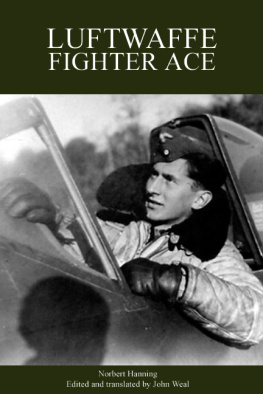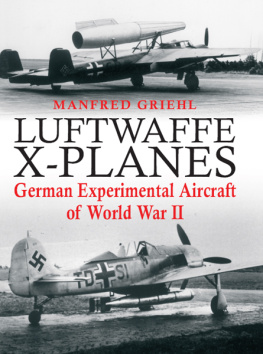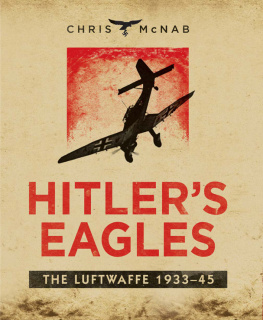
This edition is published by PICKLE PARTNERS PUBLISHINGwww.picklepartnerspublishing.com
To join our mailing list for new titles or for issues with our books picklepublishing@gmail.com
Or on Facebook
Text originally published in 1995 under the same title.
Pickle Partners Publishing 2014, all rights reserved. No part of this publication may be reproduced, stored in a retrieval system or transmitted by any means, electrical, mechanical or otherwise without the written permission of the copyright holder.
Publishers Note
Although in most cases we have retained the Authors original spelling and grammar to authentically reproduce the work of the Author and the original intent of such material, some additional notes and clarifications have been added for the modern readers benefit.
We have also made every effort to include all maps and illustrations of the original edition the limitations of formatting do not allow of including larger maps, we will upload as many of these maps as possible.
THE LUFTWAFFE AND ITS WAR OF ATTRITION
BY
Lieutenant Colonel Patricia L. C. Priest USAF
TABLE OF CONTENTS
Contents
TABLE OF CONTENTS
REQUEST FROM THE PUBLISHER
ABSTRACT
Over the years, the United States Air Force takes much credit for bringing World War II to closure. The strategic bomber, eventually along with long range fighter, was put in the skies over Germany to gain air superiority and to disrupt the war making abilities of Germany and, in particular, the Luftwaffe. The Luftwaffe had to be neutralized before the invasion of Normandy could take place. Granted this was a necessary step. However, the Luftwaffe had already lost its fighting ability and the war through poor strategy and judgment long before the strategic bomber and the long range fighter could become factors in the war.
BIOGRAPHICAL SKETCH
Lieutenant Colonel Patricia L. C. Priest (Master of Science, Systems Management, University of Southern California) has been interested in the air campaign of World War II for some time. Her father, Royce W. Priest, Colonel, USAF (Retired), was a World War II fighter ace, flying P-51s from England over France and Germany. Colonel Priest's background is administration. She has held a variety of positions, to include executive officer at a major command, director of administration at a joint command, and commander of a military entrance processing station. She is a graduate of the Air Command and Staff College, where she was a Distinguished Graduate. Colonel Priest is a graduate of the Air War College, class of 1995.
CHAPTER I INTRODUCTION
"Allied air power was decisive in the war in Western Europe.... In the air, its victory was complete." {1} Throughout my military career, I had always been under the impression that strategic bombing during World War II was the critical factor in winning the war and that air superiority was won over the skies of Europe because of America's superior aircraft and better trained airmen. I had always given credit to those great American pilots for winning the air war over Germany. Recently, however, I have altered my thinking. I will concede that the strategic bombing campaign's objective of obtaining air superiority over Germany was finally achieved during the period between December 1943 and the invasion of Normandy with the arrival of the P-51 long-range fighter. Had it not been for gaining air superiority over Germany, the invasion of Normandy would have been a failure, if not impossible.
So, why has my thinking changed? With German aircraft production at its peak in 1943 and 1944, I now ask myself where were the bombers and fighters and why were they of no consequence during the invasion? {2} The answer I discovered was that even with a mass number of aircraft available, if in fact production numbers were not inflated by the Germans, the war for the German Luftwaffe had essentially been lost before the advent of the American long range fighter into the war and before it ever became a factor in winning the air war for the Allies. Simply stated, the Germans lost in a war of attrition, the same war of attrition General Eaker had envisioned the strategic bomber force would win. {3} This war of attrition, however, started long before America's entry into the war in 1941. By the time the long-range fighter arrived in theater, it had basically been lost by the Germans, not won by the Western Allies. There were several factors that led Hauptmann Hermann to write in 1943, "The Luftwaffe is doomed." {4} The decisions to curtail production of aircraft early on and not develop advanced aircraft to conduct critical missions throughout the war; the significant loss of aircraft while fighting a three-front war; and the critical loss of experienced pilots, to include the lack of pilot training, were all key to the demise of the Luftwaffe. Before discussing each of these points individually, it's important to understand Hitler's basic objective, strategy, and doctrine as he led his country to war.
CHAPTER II HITLER'S OBJECTIVE, STRATEGY, AND DOCTRINE
The period between World I and World War II for the Germans was a time to rebuild their country. When Hitler came to power in 1933, he intended to build a strong army, capable of conquering Europe. {5} His philosophy was simple. He believed in a racial struggle, one that would annihilate the "inferior Slavonic peoples of eastern Europe." As such, his objective was to secure "living space" (Lebensraum) and along with it "the resources necessary for the survival of 'the thousand-year Reich'. " {6} To accomplish his objective, he had to go to war against the powers of Europe. Hitler's strategy was to go on the offensive and quickly defeat the armies of his enemies in a fast move across Europe. As part of the strategy to meet his objective, he needed an air force capable of supporting the army in its march against the countries of Europe. Although a separate service, at the outset many argue it became essentially a tactical air force with a doctrine of concentration supporting the army's Blitzkrieg-style operations. {7} The "lightening" defeat of Poland substantiated this doctrine from the beginning and this theory took hold. {8} Although the quick, decisive victory of the army was due in large measure to the combined arms effort of the army and the air force, there is evidence to show this was not Hitler's original intent for his air force.
Hitler realized the great potential of airpower. As the new leader of Germany, he understood that not only were an army and navy required but an air force was necessary to maintain a strong Germany. He recognized air power's uses as a force enhancer protecting the army on the front lines, as a defender of the homeland and its industries, and as an offensive weapon to paralyze the enemy's war making capability. {9} Airpower would work in conjunction with the other services as an offensive, strategic, weapon. The Luftwaffe's priorities were first to gain air superiority through attacks on bases and air-to-air campaigns, attack the war making capabilities of the enemy's homeland, interdict the enemy's lines of communication and logistics, then support the ground war through close air support should a stalemate occur. The Luftwaffe was not designed to be the sole element in success of a war. It was designed to be an independent arm in support of the entire war effort, allowing the army freedom of action on the battlefield. {10}







